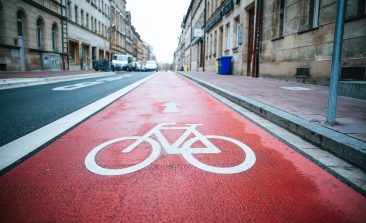Content to: Bicycles
Riding the Green Wave: Exploring the Role of Bicycles and Digital Tools in the Green Mobility Transition
Can bikes and technology join forces to create a greener tomorrow? How are cities harnessing the power of digital tools to make cycling the preferred mode of transportation?
World Bicycle Relief: Improving Education Access With The Humble Two-Wheeler
Bicycles are more than just a handy way to get around - they're a vehicle out of poverty. The NGO World Bicycle Relief shows how.
Interview: This Startup Has Developed a Bike Trailer That Thinks for Itself
If we want to ensure our cities are smarter, more liveable and more sustainable in the future, we need to come up with transport solutions that save space and resources. Nüwiel's smart electric bike trailer seems like a clever step in the right direction.
Maya Pedal: Guatemala’s Upcycled Cycles and Bicycle Blenders
A Guatemalan NGO has unlocked the potential pedal power of discarded bicycles, converting them into practical machines that benefit the local community, transform the lives of small business owners and reduce reliance on electricity and fossil fuels.
Thumbs Up! Velogista Is Our Favourite Project of the Month
There are tonnes of good ideas that can change the world. Regular readers of RESET will already know of a few. Every month, we will choose one idea that stands out thanks to its impact and innovative approach. Our favourite project in February: Velogista.




